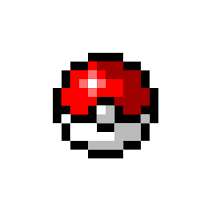"Field Experiment: Can moving between capture locations change where a Pokémon is caught (no)"

#PokemonGO: I have seen several claims recently that capture location is based on the area in which a trainer is located when a Pokémon is finally caught as opposed to the location in which the Pokémon is first encountered. This often put forward as a possible explanation for why fake screenshots with modified capture locations exist.While this has already been disproved by individuals who have accessed the Pokemon Go API, the following describes a legitimate method to disprove that the notion that capture location is based on where a Pokémon is captured rather than encountered on the game-map.PurposeThis in-the-field experiment was preformed and documented as a simple datapoint which travellers might use in the future to easily dismiss claims that moving location while in a Pokémon encounter can significantly influence the capture locations of Pokémon.The process is relatively easy to emulate, requiring only the use of the Pokémon Go app as well as some basic online mapping tools.ProcessTwo other volunteer trainers and I set out to complete a simple, easily reproduced test (thank you to trainer RedFox and trainer Daddyo for bringing their iPhones).We moved between level 10 cells which result in the capture locations of “Lisarow” and “Ourimbah” respectively while in the process of this experiment.This map shows the locations of the cells, as well as where Pokémon were encountered and captured. Clicking the mapped elements will bring up more information such as S2 Cell IDs and screenshotsFor those looking for more background on this topic, previously, I performed an experiment that confirmed that capture location is based on the approximate centre of the level 10 S2 cell in which a Pokémon is encountered. You can read about it here.The premise of this experiment is relatively simple:Step 1) Find the border of a level 10 S2 cell from which spawn points can easily be accessed on either side. You can do this with www.s2cellmap.com and some local knowledge – I am happy to provide support as best I can in the comments of this thread. Sometimes two or more cells can have the same capture location, so make sure you know that there is a difference, especially in rural areas.Step 2) Engage a Pokémon located in one S2 cell and then cross the border into the adjacent cell. Once you are certain that you are within the second cell, capture the Pokémon.Step 3) Observe the capture location.Step 4) Repeat the process of 2 and 3 with the cells reversed, encountering and then capturing a Pokémon in reverse order.ControlsWe used both Android and iPhone devices to capture the same Pokémon as a control for the variance that appears to occur when the Pokémon Go app calls capture location on different devices. In this case, the only difference that occurred was “New South Wales” displayed in full on Android but was abbreviated to “NSW” on both iPhones.ConclusionsAs expected, Pokémon encountered in one capture location that were ‘dragged’ while in an encounter into another potential capture location maintained the capture location of the cell in which they were first seen. In other words, Pokémon that were encountered in the “Lisarow” capture location but caught in the “Ourimbah” capture location maintained Lisarow as their capture location on their profiles.It is likely not possible for either a legitimate or illegitimate player to encounter a Pokémon (such as a regional) in one location and then simply move to another location in order to falsify where the Pokémon was caught through the capture location text in their app. via /r/TheSilphRoad http://ift.tt/2na1tap
"Field Experiment: Can moving between capture locations change where a Pokémon is caught (no)"
!["Field Experiment: Can moving between capture locations change where a Pokémon is caught (no)"]() Reviewed by The Pokémonger
on
13:53
Rating:
Reviewed by The Pokémonger
on
13:53
Rating:


No comments